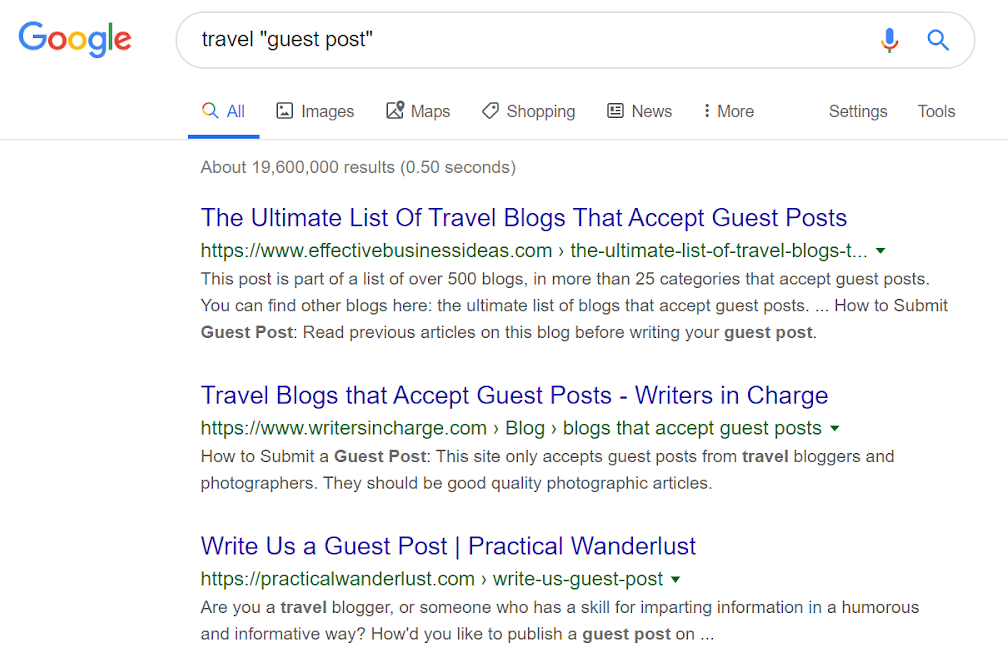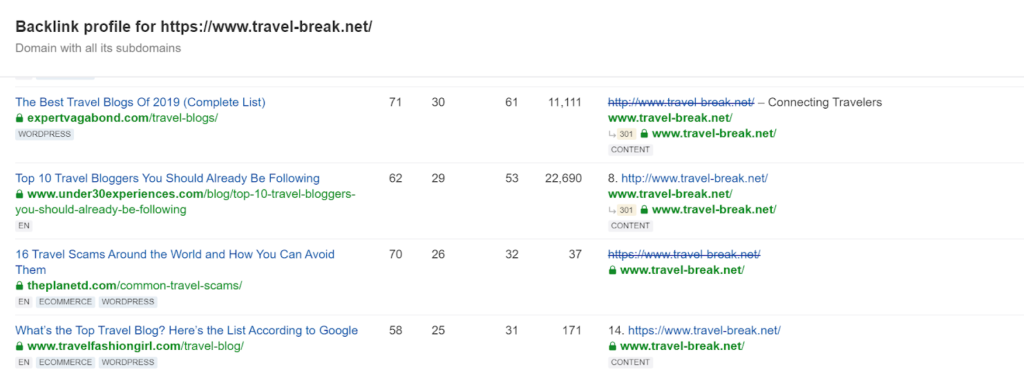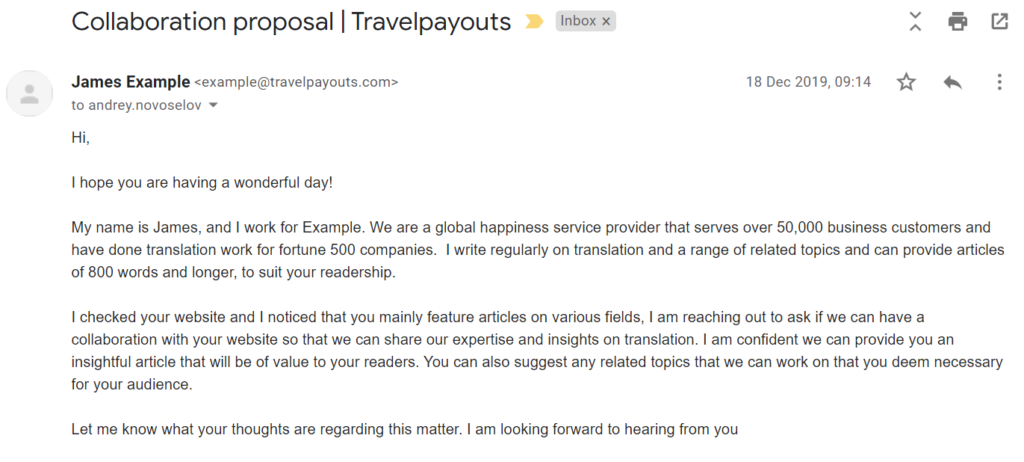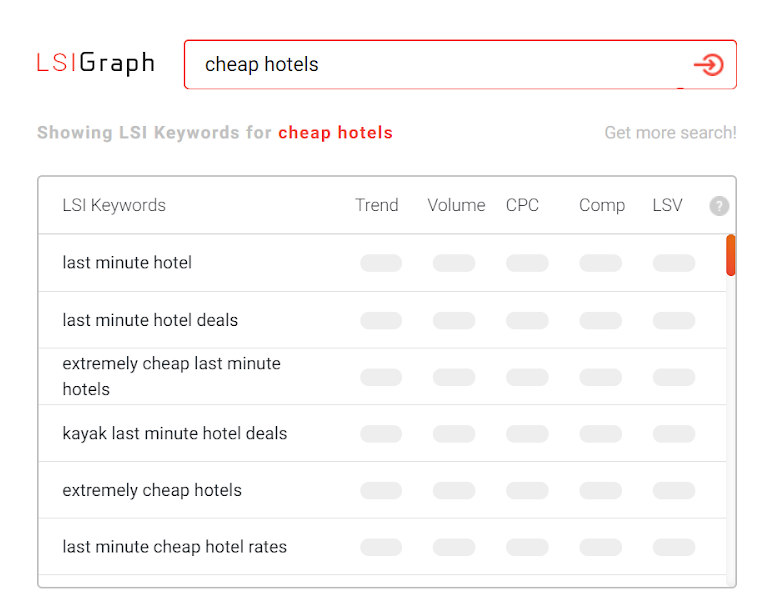What Is Guest Posting
Guest posting is a way to attract traffic to one website by writing content for another one. For example:
- 6 Social Media Marketing Attribution Models and Tools to Help Marketers
- How to Create a Private Blog Network That Works
- PBN Hosting Reviews: Best 10 PBN Hosting Providers 2020
Even though such articles are submitted on a voluntary basis and are not compensated, they still should be of exceptional quality and beneficial to their recipients.
Become a guest blogger to drive traffic to your website, establish or increase your authority in the niche, contribute to your brand image and its awareness, and build a relationship with other influencers.
Who Benefits From Guest Blogging
The growing popularity of guest blog posts proves that it remains beneficial for both sides and is a great technique to grow business. Even though many people consider it a one-way street, it is not exactly true.
Indeed, the website hosting your guest post comes out ahead. Without investing time or money, it receives ready-to-use content (provided it is of high-quality, unique and useful), more keywords to establish search engine authority and a fresh perspective for its readers – escaping routine is always refreshing. But, guest bloggers acquire even more:
- Quality traffic. Guest posts bring visitors within the niche who are more interested in the topic than random readers from search engines. According to Bamidele Onibalusi’s research, traffic sent by guest posts has a low bounce rate of 40% only, compared to the 90% rate from the Stumbleupon website.
- Backlinks. Every aspiring blogger has a long way to go to appear on the first pages of search engine results. The key thing here is to acquire as many credible backlinks as possible, which, in turn, will strengthen your blog’s authority within Google. While many bloggers buy backlinks, you can get them for free by guest posting.
- Brand recognition and authority. By writing posts for well-known bloggers, you will make readers associate you with these big names. Respect and recognition don’t appear overnight. Every guest post increases your exposure, and eventually, people will start visiting your blog because they have heard your name before.
- Become a better writer. Soley delivering articles for your own blog won’t expose you enough, while putting yourself on display for a wider audience will let you know what other people think and provide an opportunity for growth as a writer. Also, it will help build a portfolio. Once you have successfully published a few guest posts, getting other bloggers to agree to cooperate with you will be a piece of cake.
- Get more subscribers and followers on social media. The more traffic you have, the more people are likely to subscribe to your blog or follow you on social media. Getting subscribers is essential for monetizing your blog in the future, so get as many emails as possible from the very beginning.
How to Find Sites for Guest Posting
Where should you guest post? Before pitching a text, it is important to find a blogger who will agree to publish it. Here are some techniques on how to look for sites to submit a guest post to:
- Type in your keyword to define the topic and then one of the following word combinations within quotation marks: “guest post,” “guest post opportunities,” “write for us,” “guest bloggers needed,” “looking for guest bloggers” etc. Such a query will bring you a list of guest blogging networks, as in the picture below. You can do the same thing on Twitter and other social networks. Here is how you can find travel bloggers to guest post for:

- Another approach is to discover where your competitors take their backlinks from and adopt their practice. To do so, find a website within your niche, copy its URL and analyze its profile with a backlink checker.

- Backlink profile features referring domains that have a backlink to the website you are analyzing. To find guest post opportunities, you’ll have to manually check these websites and see which ones are open to cooperation. Even though this approach takes more time, it allows you to find options that are not open for everyone. In the picture below, you can see an example of how we were checking backlinks to the TravelBreak website.

- Finally, you can contact bloggers in your niche and offer up your guest post to them. This technique requires preparation. Study the website and its target audience, come up with a list of topic ideas, and more. You can contact them directly or post a comment as a guest.

Whatever approach you choose, an appropriate hosting website should be bigger than yours (to help build authority), belong to the same niche, have high-quality materials and many active followers.
Only choose credible websites for the sake of your reputation, as your name will be associated with the platforms you publish on. Ideally, contact a few bloggers at once because some of them might only answer you after a while, and by doing so, you’ll have more opportunities for guest posting.
How to Pitch
Only a well-written and proofread guest post offering a new perspective can help step up your game. Success is built on many factors, such as finding an interesting topic, doing research, delivering your text in the right format and more. The key is to provide a final product that can be published on the hosting blog without further ado or changes. All this requires a lot of work and research on your side, but also pays off in spades. Below, you’ll find the best guest blogging tips to promote your blog.
Pick a Great Idea
Once the target or targets have been chosen, it’s time to pick a topic. Needless to say, it should be in your niche so that you can provide an expert opinion and attract new readers. Here are some ideas for creating a topic for your guest post:
- Offer your perspective on topics discussed on the hosting website. The information becomes outdated really fast, so voicing a fresh opinion might be relevant.
- Find an idea at the intersection of your expertise and the other blogger’s content. For example, if you normally write about traveling around Europe, while the website that will be hosting your blog post features content about solo traveling, you can explore the topic of how to travel alone around Germany.
- Write a comprehensive article for your blog and divide it into several parts. Rewrite each part to avoid plagiarism and hand out new articles to different bloggers as guest posts. Thus, their readers will be likely to visit your blog for a full story.
- If you are at a loss of how to find an interesting and engaging topic idea, screen a few popular blogs within your niche and pick a few articles that received many likes and comments. These topics should become your inspiration. Check which points are underdeveloped and write about one of them. To automate the process, use one of the blog topic idea generators to get multiple title suggestions.
Agree on the Topic of Your Post
It might be a good idea to prepare a few topics and send them to the hosting blogger. It’s better to discuss ideas before starting work to avoid misunderstandings in the future. The blogger might point out an angle that would be perfect in regard to their content plan. The key thing is to not impose your view, but to cooperate and produce a mutually beneficial product.
Write an SEO-Friendly Text
Even if your post is aimed for a big-name blogger, making it SEO-friendly would be helpful as well. SEO-optimization allows you to make an article or the entire website understandable for search engines and be sure it will appear on the first pages of Google search results. Here are some techniques you can use:
- Make keyword research. The key thing is to identify words that people type in a search bar and fill your article with them. While short-tail keywords, containing up to two words, have the highest level of competition, long-tail keywords (four words and more) have a low search volume and, therefore, a lower competition level. The more, the merrier, as long as they organically fit into the context. To identify keywords, use dedicated software, like Google Keyword Planner, SEMRush, etc.
- Keep an eye on your competitors’ keywords. This is an easy way to find out which keywords attract traffic and which don’t in terms of ranking. You will have to just copy the URL of the website you want to check, find out the number of keywords that are used, their volume, density, etc. Use such software as Ahrefs, SEMRush, SimilarWeb and more.
- After checking on keywords, why don’t you explore related word combinations to rank as high as possible? One example of this program is LSIGraph. You type in your keyword, and you’ll see what phrases are related to your matter, as in the picture below.

- Optimize your title. For starters, stick to titles that are 60 characters long, as they will be properly displayed on the search engine results, in contrast to more wordy headings. Use keywords to rank your articles higher, as the research by Moz suggests, but don’t overdo it, because you’re mainly targeting real people, not just some algorithms.
- Take advantage of your URL. When writing and publishing your article, you can improve the text discoverability with the help of URL. Make it nice and short and insert keywords, as it counts here as well.
- Write a meta-description. It’s a paragraph that search engines show right below the title. Meta-descriptions help people get a brief understanding of your article’s topic and thus increase its click-through rate. It should contain one or two sentences and be very appealing to catch readers’ attention.
- Optimize images by using proper alt tags with keywords.
SEO-friendly articles are likely to be read by more people than texts without optimization. It takes effort and time but is more beneficial in the end.
Proofread Your Work
Proofreading your work is what helps avoid mistakes and silly word combinations. It is strongly recommended regardless of whether English is your native language or not. You can proofread the text yourself or resort to professional services.
If you want to set it up without help, follow these tips on proofreading:
- Take a break between writing and proofreading. Rest for some time to have fresh eyes.
- Think of mistakes you usually make and scan the text specifically for them.
- Reading slowly will alert you to mistakes. The human mind is able to understand the text even if you remove 50% of letters from it, so simply reading it is not equal to proofreading.
- To make it more efficient, read the text aloud, as it will involve both vision and hearing.
Format Your Post
A successful guest post should match the hosting website formatting. Analyze the content on the hosting website and format your post accordingly, regarding the average article length as well as its structure (headlines, bolded text, quotes, infographics and more).
- For the sake of readability, try to make paragraphs and sentences short. Sentences shouldn’t be more than two lines.
- Use a heading for each section of your post to improve the navigation for readers.
- Where appropriate, add lists to the text: they are simple to both write and read, create some white space on the page, facilitate scanning and structure the information. Write a numerical list for important details and a bulleted one for less essential things.
- To emphasize a phrase, put it in bold.
- Finally, consider adding relevant images and graphs with appropriate captions. Visuals are processed faster by our brains, and we remember them longer.
- Also, add a few links to some other related articles on the hosting blog to make it SEO-friendly and show the owner that you have familiarized yourself with their content.
Make a Guest Post Bio
Once a guest post is ready, it’s time to make sure it brings you profits, and you can do that by providing the article with your bio. It might be the best place to tell everyone about yourself rather than making the article less informative and more promotional.
Thus, a bio can include a backlink to your blog or social media profiles, depending on your goals. Before placing a backlink, think of which pages really need some traffic, whether it’s your product page, or a landing page, etc. Remember to add a nice photo of yourself to the bio. It will make the article more personal and help build its credibility.
Track Results
To know how efficient guest posting is in your case, consider measuring the results of your campaigns. There are many pieces of software, and one example is Google Analytics. Its Advanced Segment allows to track traffic sources, so you’ll be able to see how many visitors come from the domain you submitted your guest post to.
Knowing how beneficial every guest post is, will help you run a better marketing campaign in the future, so you’ll only invest time in activities that actually produce followers.
Guest Blogging and Google Policies
Pay attention to format your guest post in accordance with Google’s latest guidelines to avoid any inconvenience later. Even though the company doesn’t disapprove of guest posts in general, in 2017 it issued a warning in regard to large-scale article campaigns. Basically, Google opposes overlinking with the purpose to rank higher.
Don’t get carried away with both placing too many backlinks to your website inside of a guest post and inserting a lot of keywords into a link. Then, Google is wary of low-quality articles and treats them as spam, so backlinks to your website will definitely alert the search engine.
Finally, this warning opposes any duplication of content, so your guest post should be original. Violating these rules will negatively influence the website’s ranking.
How to Guest Blog
Guest blogging is a great way to cross-promote two blogs at once, so make sure you do your best. When successful, guest posts will help build your reputation as a blogger and writer and open ample opportunities for cooperation with other influencers.
After submitting the post, try to keep an eye on comments and answer every one of them to attract more followers. While you are busy out on someone else’s blog, consider inviting other bloggers to create a guest post for your website, to stay afloat.





